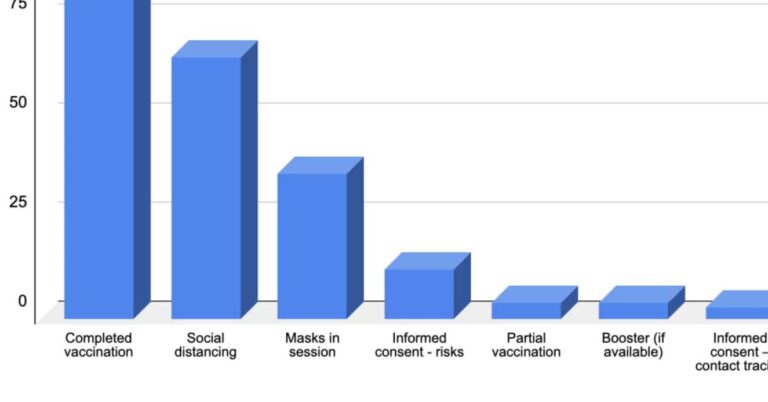Naltrexone 4.50mg Extremely Tired: Everything Need to Know About Extreme Fatigue
Naltrexone, particularly at the dosage of 4.50 mg, has garnered attention for its diverse applications and potential benefits. However, some users report experiencing extreme fatigue. This article will delve into what Naltrexone 4.50 mg is, its purposes, the issue of extreme fatigue, tips for safe use, common side effects and precautions, managing fatigue while taking Naltrexone, and its benefits.
What is Naltrexone 4.50 mg?
Naltrexone is a medication primarily known for its use in treating addiction to opioids and alcohol. It works by blocking the euphoric effects and feelings of intoxication, thereby reducing the desire to consume these substances. The 4.50 mg dosage is specifically referred to as Low Dose Naltrexone (LDN) and is used for a variety of other health conditions.
Chemical Composition
Naltrexone hydrochloride is the active ingredient, and it works by binding to opioid receptors in the brain. This binding blocks the effects of opioids and is thought to have anti-inflammatory effects at low doses.
Mechanism of Action
At low doses, Naltrexone is believed to modulate the immune system. It temporarily blocks opioid receptors, which leads to an increase in endorphin production once the blockade is lifted. This increase in endorphins is thought to help reduce pain and inflammation.
What Purpose is Naltrexone 4.50mg Used For?
While originally approved for addiction treatment, Naltrexone at a low dose is being used off-label for various other conditions.
- Autoimmune Diseases: LDN has shown promise in managing the symptoms of autoimmune diseases such as multiple sclerosis (MS), Crohn’s disease, and rheumatoid arthritis. The anti-inflammatory properties can help reduce flare-ups and manage pain.
- Chronic Pain Conditions: Conditions like fibromyalgia and chronic fatigue syndrome (CFS) have also seen improvements with LDN. Patients report reduced pain levels and increased energy.
- Mental Health: Some studies suggest that LDN can help in treating conditions like depression and anxiety, possibly due to its impact on endorphin levels.
Naltrexone 4.50 mg and Extreme Tiredness
Despite its benefits, some users report experiencing extreme tiredness or fatigue when taking Naltrexone 4.50 mg.
Understanding Extreme Fatigue
Extreme fatigue can be debilitating, affecting daily activities and overall quality of life. It can manifest as persistent tiredness, lack of energy, and an overwhelming need to sleep.
Why Does Naltrexone Cause Fatigue?
The exact mechanism is not fully understood, but it is hypothesized that the adjustment period of the body to increased endorphin levels and changes in immune function might contribute to this side effect. Additionally, individual reactions to medication can vary, and some people may be more sensitive to its effects.
Tips for Safe Use of Naltrexone 4.50mg
To minimize the risk of side effects and ensure the safe use of Naltrexone 4.50 mg, consider the following tips:
- Consult Your Doctor: Always discuss this with your healthcare provider before starting Naltrexone, especially if you have pre-existing health conditions or are taking other medications. Your doctor can assess your overall health and determine if Naltrexone is suitable for you.
- Start Low and Go Slow: Begin with a lower dose and gradually increase to 4.50 mg as advised by your doctor. This can help your body adjust to the medication more smoothly. Starting low and increasing the dose slowly can minimize the risk of severe side effects.
- Monitor Your Health: Regularly check in with your healthcare provider to monitor the effects of the medication and make any necessary adjustments. Keeping a health diary to track any changes in your symptoms or side effects can be helpful.
- Stay Hydrated and Eat Well: Proper hydration and a balanced diet can help manage some side effects, including fatigue. Eating nutrient-rich foods and staying hydrated can support your overall well-being and energy levels.
Common Side Effects and Precautions
Like any medication, Naltrexone 4.50 mg can cause side effects. Being aware of these can help you take appropriate action if they occur.
Common Side Effects
- Nausea: Some users report feeling nauseous, especially when starting the medication. This can often be managed by taking Naltrexone with food.
- Headaches: Mild to moderate headaches can occur. Staying hydrated and getting adequate rest can help alleviate this.
- Dizziness: Feeling lightheaded or dizzy is another reported side effect. It is important to get up slowly from a sitting or lying position to reduce dizziness.
Precautions
- Alcohol and Drug Use: Do not use Naltrexone if you are still consuming alcohol or opioids, as it can precipitate withdrawal symptoms. Ensure that you are fully detoxed before starting Naltrexone.
- Liver Function: Regular liver function tests are recommended, as Naltrexone can affect liver enzymes. Inform your doctor if you have a history of liver disease.
- Pregnancy and Breastfeeding: Consult your doctor if you are pregnant or breastfeeding before starting Naltrexone. The effects of pregnancy and breastfeeding are not fully understood, so professional guidance is essential.
How to Manage Fatigue While Taking Naltrexone 4.50mg
Managing fatigue effectively can help you benefit from Naltrexone without compromising your daily life.
- Create a consistent daily routine that includes regular sleep patterns, balanced nutrition, and moderate physical activity. Having a structured day can help your body adjust and manage fatigue better.
- Listen to your body and rest when needed. Short naps and relaxation techniques can help manage tiredness. Ensure that you are getting enough sleep each night.
- Engage in low-impact exercises like walking or yoga. Regular physical activity can boost energy levels over time and improve overall health.
- Stress management techniques such as meditation, deep breathing exercises, and mindfulness can help reduce fatigue. Reducing stress can have a significant positive impact on your energy levels.
- Discuss with your healthcare provider about supplements that may help with energy levels, such as vitamin B12, iron, or coenzyme Q10. Ensure that any supplements you take are safe and appropriate for your health condition.
Benefits of Naltrexone 4.50 mg
Despite the potential for fatigue, Naltrexone 4.50 mg offers significant benefits for many users.
- Improved Symptoms of Chronic Conditions: Many patients report reduced pain, inflammation, and other symptoms associated with chronic conditions like fibromyalgia, MS, and Crohn’s disease. This can lead to a better quality of life and increased ability to perform daily activities.
- Enhanced Quality of Life: By managing symptoms more effectively, Naltrexone can improve overall quality of life, making daily activities more manageable. Patients often report feeling more in control of their health.
- Potential Mental Health Benefits: Some users experience improved mood and reduced symptoms of depression and anxiety. The increase in endorphin levels can have a positive effect on mental health.
- Non-Addictive: Unlike some pain medications, Naltrexone is non-addictive, making it a safer long-term option for many patients. This is particularly beneficial for those with a history of substance abuse.
Conclusion
Naltrexone 4.50 mg is a versatile medication with a range of applications, from managing autoimmune diseases to chronic pain and mental health conditions. While some users may experience extreme tiredness, understanding and managing this side effect can help maximize the benefits of the medication. Always consult with your healthcare provider for personalized advice and to ensure the safe and effective use of Naltrexone 4.50 mg.
FAQs:
Can I take Naltrexone 4.50 mg if I am still using opioids or alcohol?
No, Naltrexone should not be taken if you are still consuming opioids or alcohol, as it can cause severe withdrawal symptoms. You must be fully detoxed before starting Naltrexone.
How long does it take for Naltrexone 4.50 mg to start working?
The effects of Naltrexone can vary depending on the condition being treated. Some users may notice improvements within a few days, while for others it may take several weeks.
Is it safe to use Naltrexone 4.50 mg during pregnancy?
Consult your doctor if you are pregnant or planning to become pregnant. The safety of Naltrexone during pregnancy has not been fully established, so professional guidance is essential.
Can I stop taking Naltrexone 4.50 mg abruptly?
It is best to consult your doctor before stopping Naltrexone. Abrupt discontinuation may cause a return of symptoms. Your doctor can provide guidance on how to safely taper off the medication if necessary.
What should I do if I experience severe side effects?
If you experience severe side effects, such as difficulty breathing, severe dizziness, or intense pain, seek medical attention immediately. Contact your healthcare provider for any other side effects that concern you.







